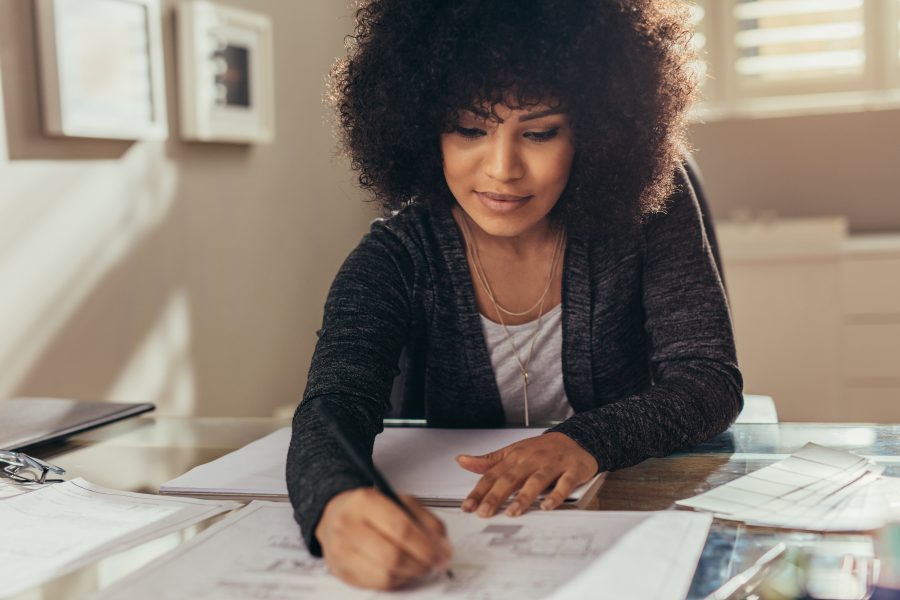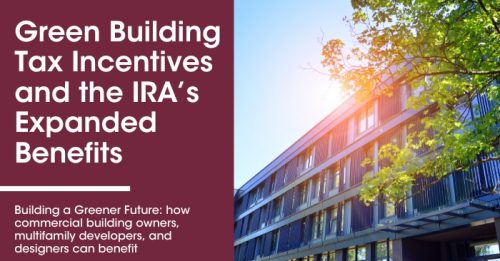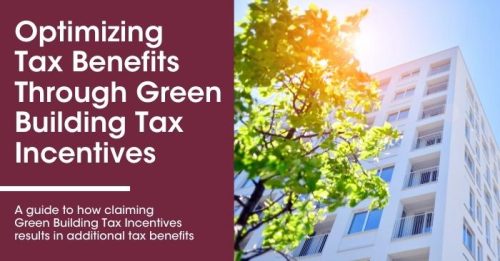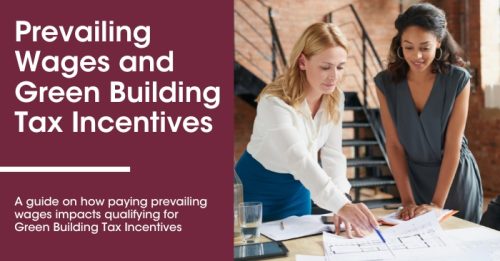Green Building
Tax Incentives
In an effort to drive more clean energy consumption that comes from commercial and residential buildings, the federal government has implemented a number of Green Building Tax Incentives to reward sustainable construction practices that will help reduce the carbon footprint.
These various incentives encourage building owners and designers to improve or construct energy-efficient systems by offsetting higher upfront costs associated with green building materials and other technologies.
Determine Your Design's Eligibility
Impacts of the Inflation Reduction Act
While the government first introduced these green building tax programs in the early 2000s, the signing of the Inflation Reduction Act (IRA) in 2022 cemented the government’s push to make sustainable buildings more economically attractive. With the signing of the IRA, benefits of programs like the 179D Energy–Efficient Commercial Building Tax Deduction and the 45L Tax Credit were expanded to allow more money to be claimed on eligible projects for those that adopt energy-efficient building practices.
KBKG’s Green Building Tax Incentives
179D Tax Deduction
Unlock huge savings with the 179D Tax Deduction and get up to $5.65 back per square foot for constructing or renovating energy-efficient commercial or tax-exempt buildings. To qualify, owners and designers need to have installed HVAC, interior lighting, or building envelope and insulation systems that meet energy requirements established by the IRS and ASHRAE standards. Learn More.
45L Tax Credit
The 45L Tax Credit offers up to $5,000 per unit for energy-efficient homes and promotes sustainable housing while cutting energy costs for owners and tenants. By constructing clean energy homes that align with the Department of Energy’s program for Zero Energy Ready Homes and the Environmental Protection Agency’s program for Energy Star Homes, developers and home builders can qualify for the 45L Tax Credit.
Learn More.

Qualifying for Green Building Tax Incentives Can Warrant Other Tax Benefits
To optimize as many tax benefits as possible, candidates looking to qualify for Green Building Tax Incentives should also seek other tax incentives and other cost-saving measures that KBKG offers. While an architecture or engineering firm claims 179D for designing an energy-efficient building, that same firm might also qualify for the Research & Development Tax Credit for time and expenses spent on creating new designs that make a building more sustainable. As a multifamily housing developer goes through the process of securing the 45L Tax Credit, they can also look into seeing how they can accelerate their depreciation deductions through a Cost Segregation study.
RECENT GREEN BUILDING TAX INCENTIVES BLOGS

Green Building Tax Incentives and The IRA’s Expanded Benefits
Green Building Tax Incentives and the IRA’s Expanded Benefits Building a Greener Future: how commercial building owners, multifamily developers, and designers can benefit With a goal of substantially reducing greenhouse gas emissions by 2030, the federal

Optimizing Tax Benefits Through Green Building Tax Incentives
Optimizing Tax Benefits Through Green Building Tax Incentives A guide on how claiming Green Building Tax Incentives results in additional tax benefits With more building owners and designers constructing commercial and residential buildings that meet the

Prevailing Wages and Green Building Tax Incentives
Prevailing Wages and Green Building Tax Incentives A guide on how paying prevailing wages impacts Green Building Tax Incentives Taking advantage of Green Building Tax Incentives has proven to be a financially viable way to reduce
Claiming Green Building Tax Incentives
Since 1999, KBKG has helped architects, designers, and developers claim 179D and 45L, having captured hundreds of millions of dollars in deductions and credits for clients. To find out which energy-efficient incentives qualify for sustainable commercial buildings, contact a KBKG expert today and see how Green Building Tax Incentives apply to various businesses initiatives.

